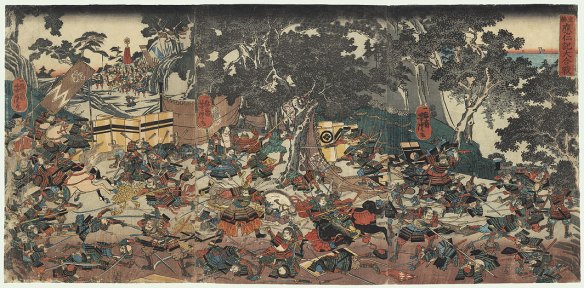
Military power in Japan became private and “feudal” long before government or military authority did. Unlike the knights and barons of northwestern Europe, Japan’s bushi were fashioned to serve the needs of a still-secure, still-vital centralized state. Court enfranchisement of private warrior power from very early on worked, paradoxically, to keep connections between the military and political hierarchies thin for many centuries thereafter. There was no power vacuum into which incipient warlords could rush, and little bushi class consciousness to incite a warrior revolution.
Until the very end of the early medieval era, the “feudalization” of military organization was thoroughgoing only at the monadic level, between warrior leaders and small bands of direct retainers. Large forces and networks were difficult to sustain for very long, and difficult to assemble, even in the short term, without the support of state authority in some form. Hence military power was seldom a practical route to political power in Japan before the fourteenth century. Indeed, the opposite more often proved true: political power and authority were crucial to any maintenance of military power.
Minamoto Yoritomo’s declaration of independence in 1180 stands, in many respects, as a glaring exception to this precept. But even his early calls to arms, which claimed – however spuriously – a mandate from Prince Mochihito to rouse the east, co-opted the authority and the framework of the imperial state. And the developments that followed from his subsequent negotiations with Go-Shirakawa integrated the feudal lordship he had initiated deeply into the court-centered polity.
In its mature form, the Kamakura power structure simplified the Heian military/police system while retaining most of its basic principles and key features. As such, it created a framework for the continued existence of the Heian polity, even as it laid the groundwork for the warrior rule that emerged under the Ashikaga regime.
On a more prosaic level, and of more direct concern to this study, the dual – and dueling – organizational principles of Heian-, Kamakura- and Nambokucho-era military forces mitigated against extensive articulation of command and control on early medieval battlefields, with significant repercussions for tactics and the nature of warfare.